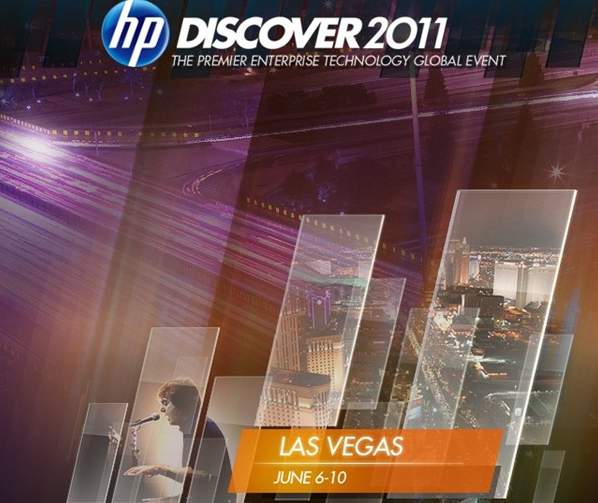 NEWS
NEWS
 NEWS
NEWS
 NEWS
NEWS
HP helped create Silicon Valley and is one of only a handful of technology brands that is known worldwide. Being a huge company of over 300 thousand employees with many ![]() products and services, it can be difficult to pin down what HP’s mission is today. At HP Discover this week, over ten thousand gather to get an update on HP’s enterprise businesses. While competitors deride HP as “the printer company”, HP has a broad portfolio and enviable market positions. While the press is fast to talk about startups and up-and-coming competition, HP is #1 is servers, #1 in bladeservers, #2 in networking and #3 in external storage (and #1 for total storage). Two years ago, Dave Donatelli left EMC (where he spent 22 years) to take over HP’s Enterprise Servers, Storage and Network (ESSN) division. Through a mix of internal developments, acquisitions and combinations of technology, Donatelli has a clear goal for ESSN – to be the leader in converged solutions for next-generation data centers and the building blocks of cloud offerings.
products and services, it can be difficult to pin down what HP’s mission is today. At HP Discover this week, over ten thousand gather to get an update on HP’s enterprise businesses. While competitors deride HP as “the printer company”, HP has a broad portfolio and enviable market positions. While the press is fast to talk about startups and up-and-coming competition, HP is #1 is servers, #1 in bladeservers, #2 in networking and #3 in external storage (and #1 for total storage). Two years ago, Dave Donatelli left EMC (where he spent 22 years) to take over HP’s Enterprise Servers, Storage and Network (ESSN) division. Through a mix of internal developments, acquisitions and combinations of technology, Donatelli has a clear goal for ESSN – to be the leader in converged solutions for next-generation data centers and the building blocks of cloud offerings.
The starting point of HP’s stack is the ProLiant and BladeSystem server lines. HP has a long history of bundling pre-configuring solutions (typically in a rack) around a server – such as power, networking, cabling and storage – preventing competition from getting a foothold in HP accounts. The blade server product lines go beyond bundling into integration, where the FlexFabric product line has earned a good reputation of simplifying networking at the server layer (see my article on FlexFabric Virtual Connect which was the first server-based networking solution to blur the line between Ethernet and Fibre Channel). HP (and IBM) is pushing Cisco networking out of the rack with in-house technology. While HP is having success at the rack, it has not yet proven that it can move networking gear to non-HP server environments or to gain a greater share of core networks where the risk-aversion is more important than cost savings.![]()
HP has the broadest line of converged stack solutions – ranging from pre-configured server and storage solutions to solutions that embed networked storage into the server. HP has been building on the initial Matrix platform, adding converged management (CloudSystem Matrix software). HP has done a significant update to its converged solutions (see David Floyer’s analysis). The update to the product line has a significant focus on virtualization (hypervisor agnostic – VMware, Microsoft and Citrix) and applications – this aligns with the general trend that I see of stacks becoming more efficient and aligned with critical applications. HP is facing tough competition for converged infrastructure solutions. Both NetApp and VCE are moving aggressively in the stack wars and list HP as the top solution that they are displacing in the marketplace (see my recent article on NetApp Flexpod, VCE Vblock and HP CI). From a storage standpoint, HP leverages LeftHand and 3PAR product lines – both products are newer architectures [than EMC, NetApp and other HP lines] that are well aligned with virtualization infrastructure requirements. HP also understands that people will need to change the way they do things to deliver new solutions. HP’s ExpertOne training is creating IT generalists who can span silos and manage the new pools of infrastructure.
SAP co-CEO Bill McDermott says that we’re in the age of “Big Data, Big Storage, Big Cloud”, what do you think defines HP today? I’m looking forward to learning a lot at HP Discover this week and participating with The Cube broadcast with HP executives, partners and customers. I’ll update as time allows – please post a comment or contact me on Twitter (I’m @stu) with thoughts or areas you’d like to find out more about.
[Cross-posted at Wikibon Blog]
Support our mission to keep content open and free by engaging with theCUBE community. Join theCUBE’s Alumni Trust Network, where technology leaders connect, share intelligence and create opportunities.
Founded by tech visionaries John Furrier and Dave Vellante, SiliconANGLE Media has built a dynamic ecosystem of industry-leading digital media brands that reach 15+ million elite tech professionals. Our new proprietary theCUBE AI Video Cloud is breaking ground in audience interaction, leveraging theCUBEai.com neural network to help technology companies make data-driven decisions and stay at the forefront of industry conversations.